21 Best Erosion Control Plants for Your Yard
Keep soil from washing or blowing away by utilizing these plants for erosion control
Buy erosion control plants - Order online and have them shipped right to your door
Erosion happens when the top layer of garden soil is worn away by heavy rain, runoff, wind, or other disruption. This can result in a loss of soil tilth and nutrients, impacting the health of your soil and plants.
There are many types of plants that prevent erosion, with deep roots or a suckering habit that anchors the soil. This is especially crucial on a steep slope or hillside where erosion can be most problematic.
Here are some of the best erosion control plants to add to your landscape.
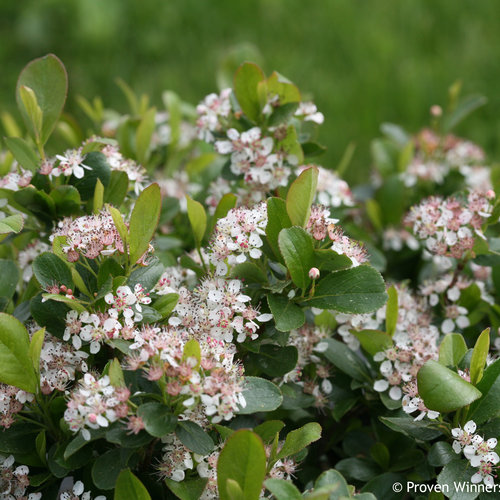 1. ARONIALow Scape Mound® This native deciduous shrub produces dark green foliage, scented white flowers, shiny red or black berries, and brilliant fall color. Suckering roots spread to form dense thickets for natural areas or hillside erosion control. Low Scape Mound® is a dwarf variety suitable for smaller spaces, proving its qualities for one of the best plants for erosion control. |
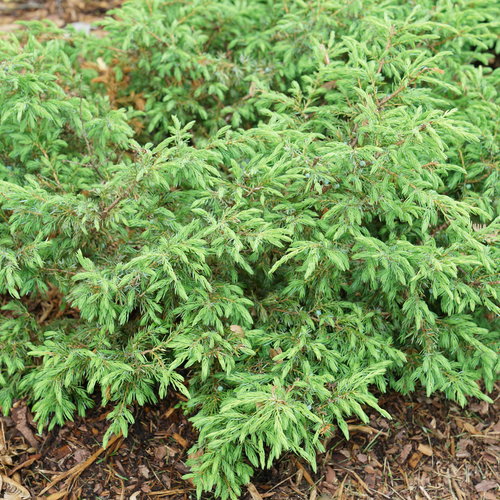 2. JUNIPERTortuga® Juniper is a hardy evergreen conifer with year-round appeal, occurring in a range of colors, forms and sizes, from diminutive ground covers to towering trees up to 130 feet tall. Tortuga® is a creeping juniper with finely textured emerald green foliage and a spreading habit that is suitable as a maintenance-free erosion control solution for borders and foundation plantings. |
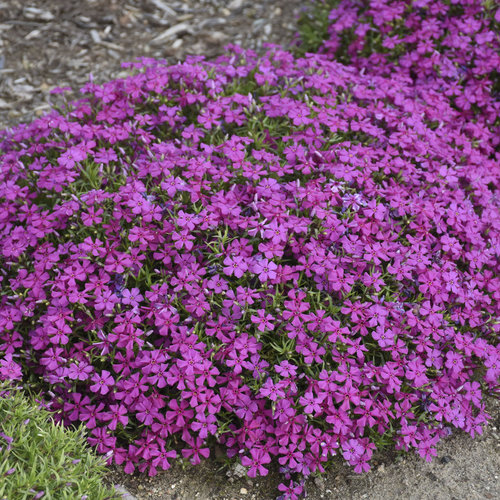 3. PHLOXMountainside® ‘Majestic Magenta’ Phlox is a herbaceous flowering perennial with an upright or ground cover habit, and is used in cottage-style borders and rock gardens. Mountainside® ‘Majestic Magenta’ has a low mat-forming habit, with brilliant dark pink flowers that bloom from early spring to mid-spring. It is useful for stabilizing rocky or sandy banks, and is especially attractive when allowed to spill over rock walls. One of the stunning flowering plants to prevent erosion. |
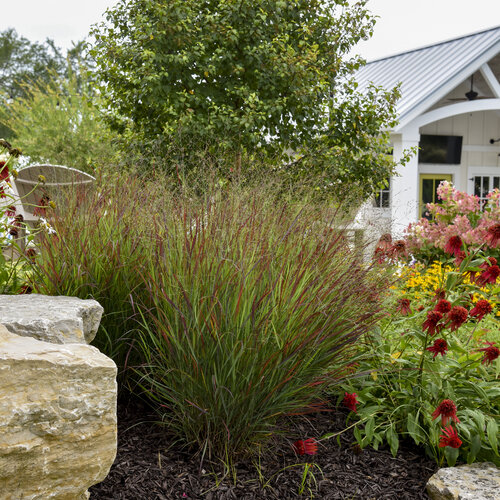 4. RED SWITCH GRASSPrairie Winds® ‘Cheyenne Sky’ Native to North American prairies, this tough ornamental grass has strappy foliage, airy flower plumes, and an elegant upright habit, adding structure and texture to the landscape. This clumping perennial spreads through dense rhizomes, making it one of the best plants for erosion control on slopes and for native landscapes. |
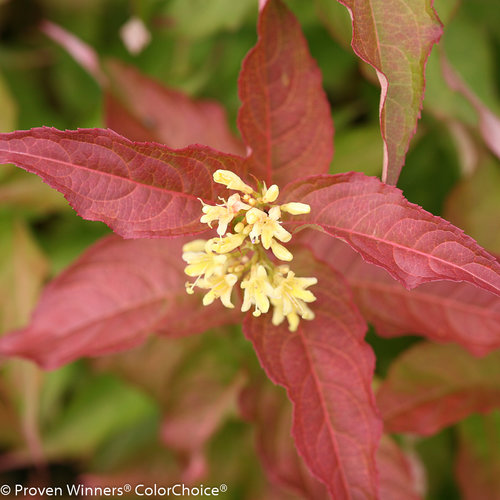 5. DIERVILLAKodiak® Orange This underused deciduous shrub has multi-seasonal appeal, spreading through suckering roots to form dense colonies. Kodiak® Orange has orange new growth, yellow flowers, and orange-red fall color. The compact habit is suitable for stemming erosion in smaller spaces or along a slope, making it one of the best plants to prevent erosion. |
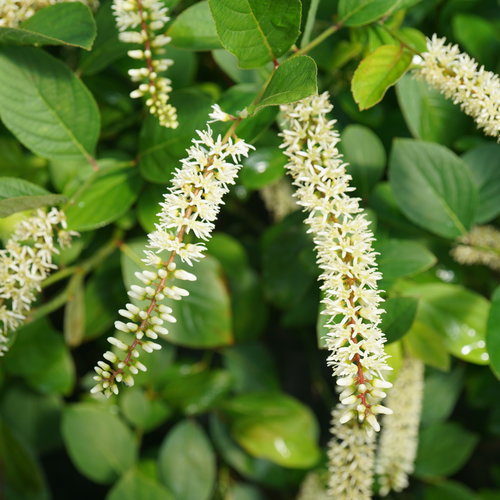 6. SWEETSPIREScentlandia® Sweetspire is a native plant with star-shaped white flowers, dark green foliage and dazzling fall color. This deciduous shrub has a dense suckering habit and is tolerant of most soils and poor drainage, making it a low-maintenance solution for wet or poor soils. Scentlandia® has exceptional fragrance and a dwarf habit suitable for smaller yards. |
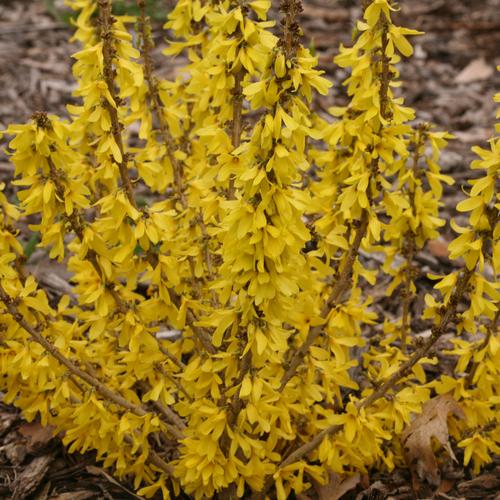 7. FORSYTHIAShow Off® Sugar Baby® This maintenance-free deciduous shrub is valued for its cheerful yellow flowers that bloom in early spring, with a dense spreading habit that is a useful plant to prevent erosion control along a bank or in a woodland setting. Show Off® Sugar Baby® is a dwarf variety suitable for smaller yards. |
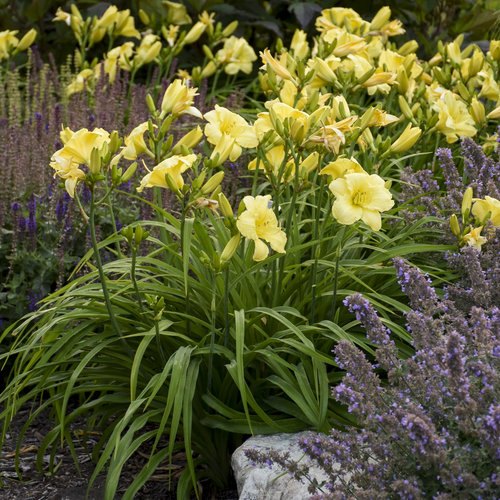 8. DAYLILYRainbow Rhythm® ‘Going Bananas’ Daylily is one of the most popular flowering perennials, with grass-like foliage and showy trumpet-shaped flowers in a wide range of colors. The dense fleshy roots provide a low-maintenance solution for plants to prevent erosion along sunny slopes or beds with average soil and moist conditions. Rainbow Rhythm® ‘Going Bananas’ produces lemony yellow flowers from summer into fall. |
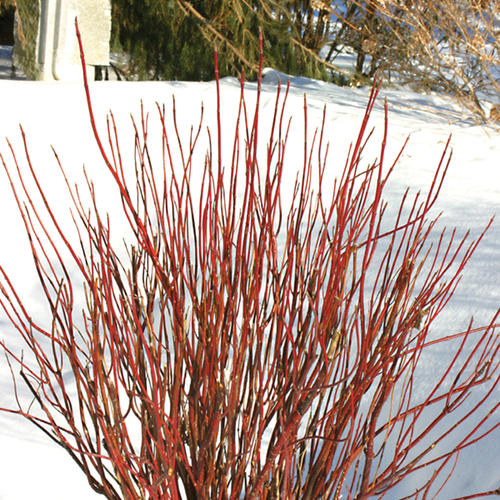 9. RED-OSIER DOGWOODArctic Fire® Red Red-osier dogwood is a native deciduous shrub with four-season appeal, with brightly colored stems that add winter interest to the landscape. This moisture lover has a dense suckering habit for stabilizing soil in wetlands and rain gardens. Arctic Fire® Red has fiery red stems and a dwarf habit suitable for smaller yards. |
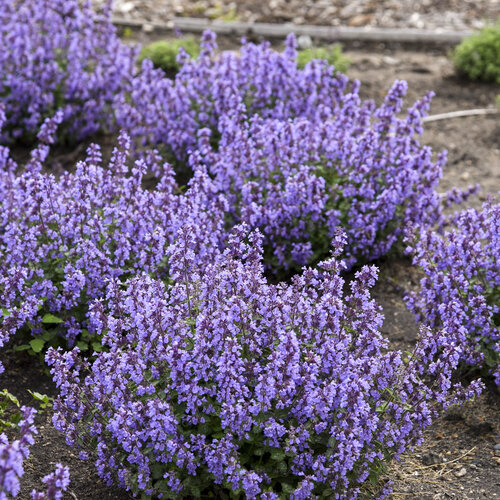 10. CATMINT‘Cat’s Pajamas’ Catmint is a hardy herbaceous perennial, with tubular flowers that bloom from late spring to fall. Tolerant of poor soils and neglect, catmint can be used as a low-maintenance erosion solution for controlling erosion on slopes and in waterwise landscapes. ‘Cat’s Pajamas’ has vivid blue flowers and a compact habit that is resistant to flopping. |
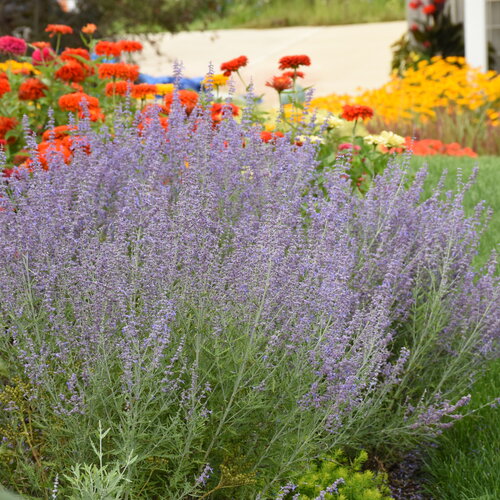 11. RUSSIAN SAGE‘Denim 'n Lace’ This carefree perennial produces gray-green foliage and tall spikes of lavender-blue flowers for months of continuous color. ‘Denim 'n Lace’ has a compact habit that is resistant to flopping. Use as low-maintenance solution in hot, dry areas such as curbside strips and waterwise landscapes. |
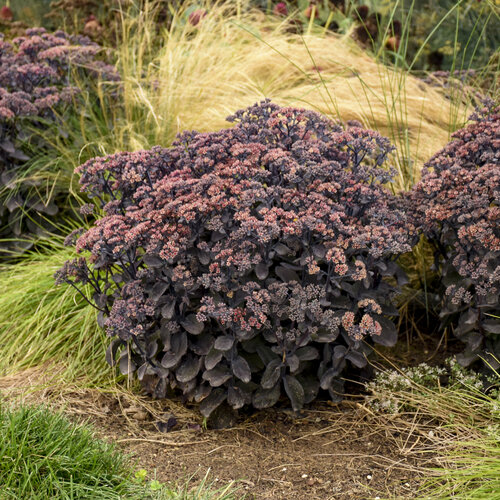 12. STONECROPRock ‘N Grow® ‘Back in Black Stonecrop is a drought-tolerant, herbaceous perennial with fleshy leaves and long-lasting flowers that provide late-season color to the landscape. Rock ‘N Grow® ‘Back in Black’ has deep purple foliage and rich pink flowers, with a dense spreading habit that helps stabilize soil in rock gardens and xeriscapes. |
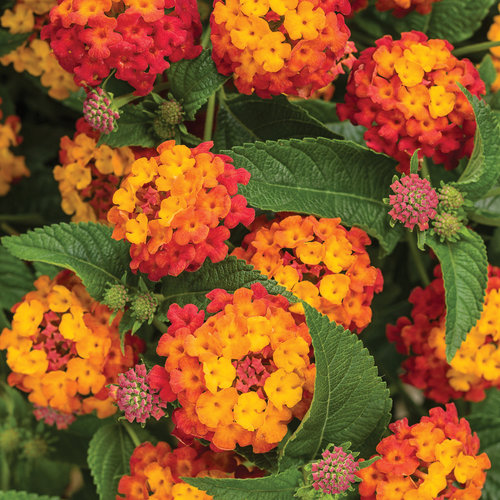 13. LANTANALuscious® Citrus Blend™ Lantana, which is most often grown as an annual, produces vibrant flower clusters from planting until frost. It can be grown as a perennial shrub in frost-free regions. Plants produce fibrous spreading roots that stabilize soil in beds and borders. Luscious® Citrus Blend™ has bright orange, red and yellow flowers on upright compact plants. |
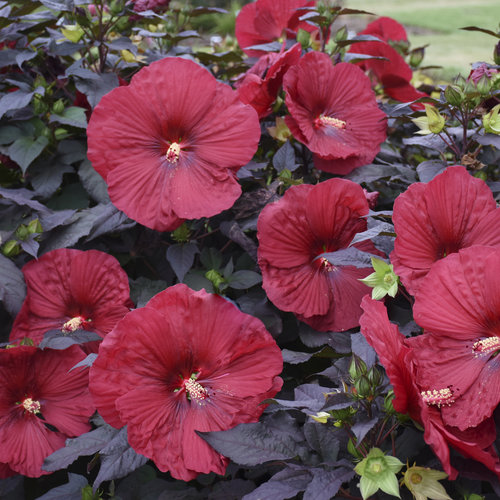 14. ROSE MALLOWSummerific® ‘Holy Grail’ Rose mallow, also known as hardy hibiscus, is a deciduous perennial with a shrubby habit and exotic trumpet-shaped flowers. This moisture lover is useful for erosion control in wetlands and rain gardens. Summerific® ‘Holy Grail’ produces deep purple leaves and oversized red flowers for a show-stopping effect in the landscape. Here are some of the top plants for rain gardens. |
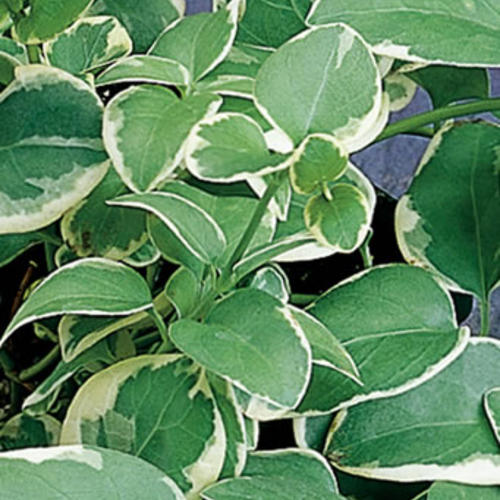 15. VINCA VINE‘Variegata’ Known as bigleaf periwinkle, this perennial ground cover thrives in difficult sites including dry shade and underneath trees where little else will grow. An effective erosion control ground cover for its vigorous growth habit, vinca is useful for covering large areas. ‘Variegata’ has oval shaped green and white leaves and vivid blue flowers. |
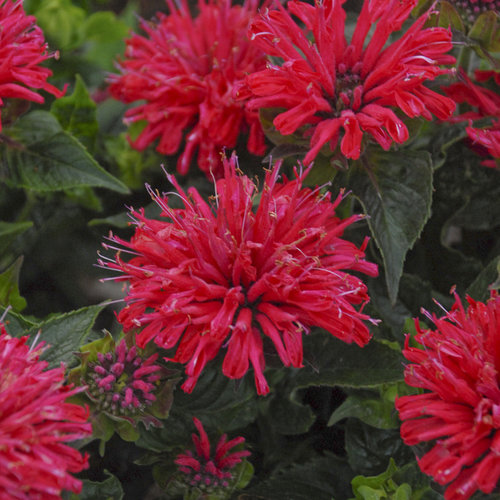 16. BEE BALM‘Pardon My Cerise’ Bee balm is a native herbaceous perennial with summer-blooming flowers that are attractive to hummingbirds, butterflies and other insect pollinators. Plants have a rhizomatous clumping or spreading habit that is useful for erosion control in native gardens and cottage-style borders. ‘Pardon My Cerise’ has brilliant red flowers and a compact habit suitable for small spaces. |
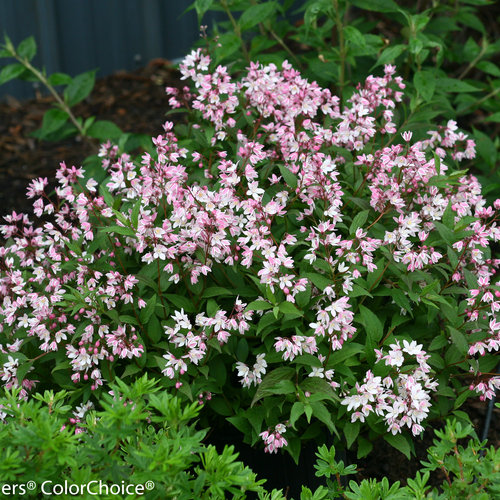 17. DEUTZIAYuki Cherry Blossom® This deciduous shrub has year-round appeal, with fragrant bell-shaped flowers, finely textured foliage, fall color, and exfoliating bark. The dense spreading habit is useful for stabilizing soil on slopes or in shrub borders. Yuki Cherry Blossom® is a dwarf variety with pink flowers that is suitable for smaller yards. |
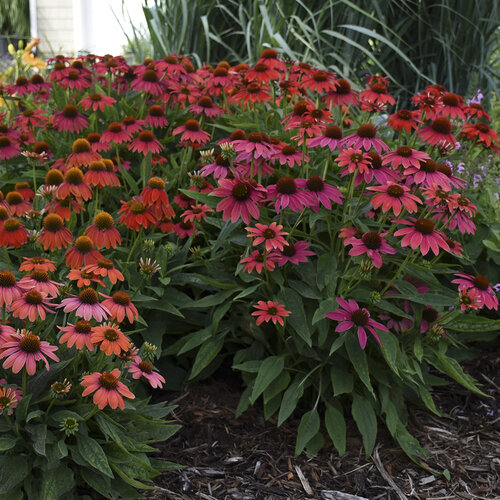 18. CONEFLOWERSummersong™ Firefinch™ Native to US prairies and meadows, coneflower is a food source for songbirds, insect pollinators and other wildlife. This herbaceous perennial produces daisy-like flowers in summer, with a dense root system that is useful for stabilizing soil in native gardens and waterwise landscapes. Summersong™ Firefinch™ has brilliant sunset-colored flowers and a compact growth habit suitable for small urban lots. |
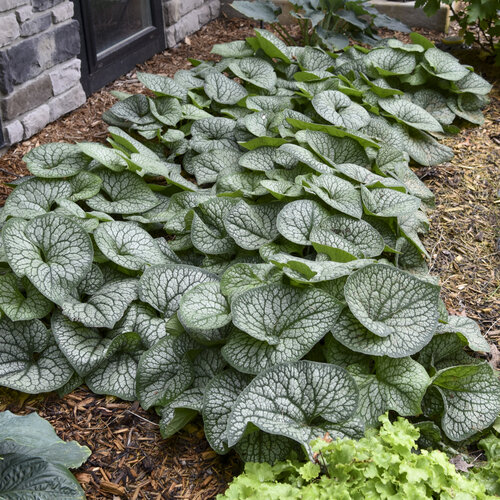 19. HEARTLEAF BRUNNERA‘Jack of Diamonds’ Also known as Siberian bugloss, this hardy herbaceous perennial is grown for the heart-shaped leaves and blue flowers that resemble forget-me-nots. Rhizomatous spreading roots stabilize soil in difficult areas such as dry shade and underneath trees. ‘Jack of Diamonds’ produces striking silver-veined foliage. |
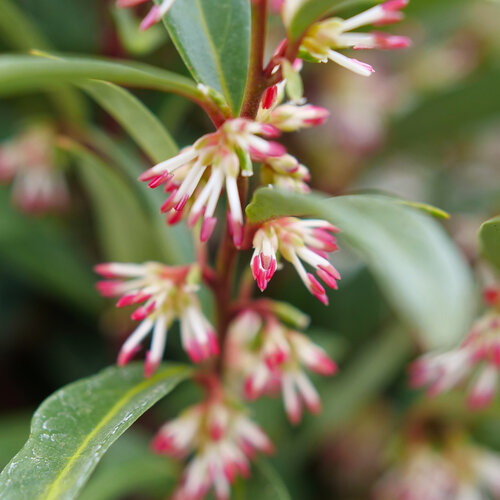 20. SWEET BOXSweet & Lo™ Sweet box is an excellent erosion control plant, that makes an effective evergreen ground cover. This suckering shrub is especially useful for stabilizing shaded areas of your garden. Water regularly during its first growing season to allow it to establish an extensive root system. In early spring, bunches of slender flowers bloom in shades of hot pink and white, emitting a delightful jasmine-like fragrance that attracts early pollinators. Plus, the glossy green foliage remains attractive year-round. |
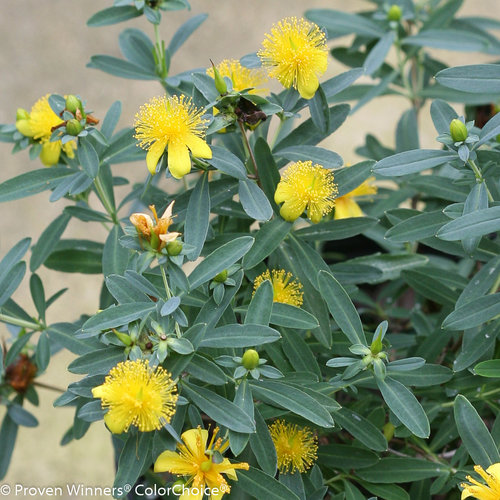 21. ST. JOHN'S WORTBlues Festival® A vigorous grower, St. John's Wort is highly effective for erosion control on slopes and large areas. It rapidly establishes deep taproots, as well as lateral roots that bind the soil tightly. This deer-resistant, North American native thrives in dry conditions, requiring little care once established. The blue-green foliage is complemented by sunny yellow flowers in summer that attract pollinators. |
FAQ’S
What would you plant on a hillside to stop soil from washing away?
Fast-growing plants for erosion control such as suckering shrubs, prairie natives with taproots, and vining perennial ground covers are good slope stabilization plants in erosion-prone areas.
How do I keep my sloped yard from eroding?
In addition to using plants, mulch and erosion control blankets can help to hold the soil and reduce runoff.
Can plants stop soil erosion?
Plants with well-developed root systems can be effective at stemming erosion by stabilizing the soil to keep it from washing or blowing away.
Try these tips for dealing with erosion during the rainy season.
How do plants help in erosion control?
Many types of plants have adapted to drought or other challenging growing conditions by developing deep tap roots or shallow spreading roots that help them to survive. These are some of the best plants for erosion control.
Here are some of the best garden plants that have adapted to wet or dry conditions.
Buy Proven Winners plants:




